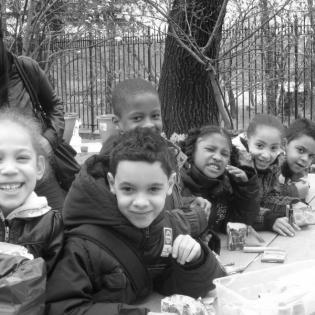TeachOne for Earth Day
What is great about being outdoors? What traits describe the natural areas in my community? What can I do to influence others to take responsibility for and be playful with nature?
Messing Around with Nature: Young people learn about environmental stewardship through valuing and respecting nature. They play outdoors while working together - possibly with people from different generations - to enhance the local community's natural play areas (e.g., mud kitchen, community cleanup). They learn about stewardship, environmental justice, science, reading, language, as well as habits and practices that are good for the environment while they connect to their own interests/talents and different people in the local community.
Children spend time outside to play in nature and recognize the beauty of diverse living things in their environment. Their service project is to share nature with someone else in a creative interaction.
Young people get outside and play in nature and recognize the beauty of diverse living things in their environment. Their service project is to take action to protect nature and share nature with someone else.
What are the forces in our lives that separate us from the outdoors today, and what can we do to fuel up on the power of nature? In this lesson, young people research the benefits of being outside and the human impact on the environment or about environmental justice issues with a local impact. Then they make a service-learning plan to take action to protect nature and get others outside in nature or to address an enviromental justice issue they've identified. This lesson is suitable for physical education, biology, geography, and English classes.
